On our first full day of touring Berlin we learned about the Cold War from visiting the East Side Gallery, the DDR Museum, and Checkpoint Charlie. The East Side Gallery is about a one-mile section of the Wall that is still standing and is now covered with artwork. Some of it is amateur graffiti (we actually saw a young man add to the graffiti right when we first got there), but most of the Wall is covered with really amazing planned pieces by more than 100 artists from over 20 countries. We spent nearly two hours slowly walking this section, taking in the art and talking through what struck us as we went.
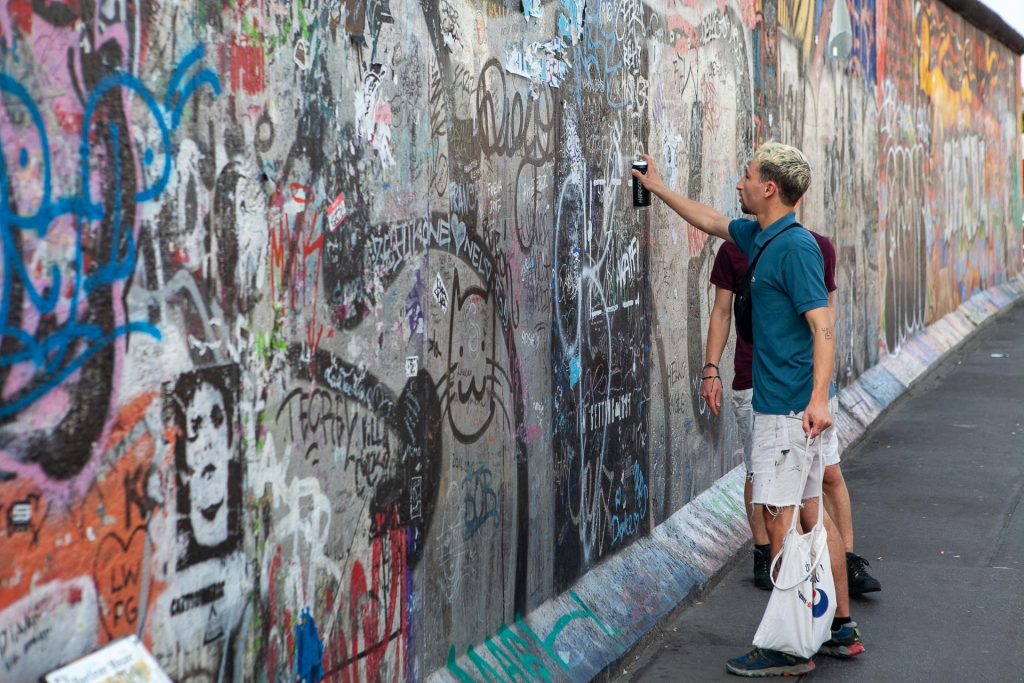
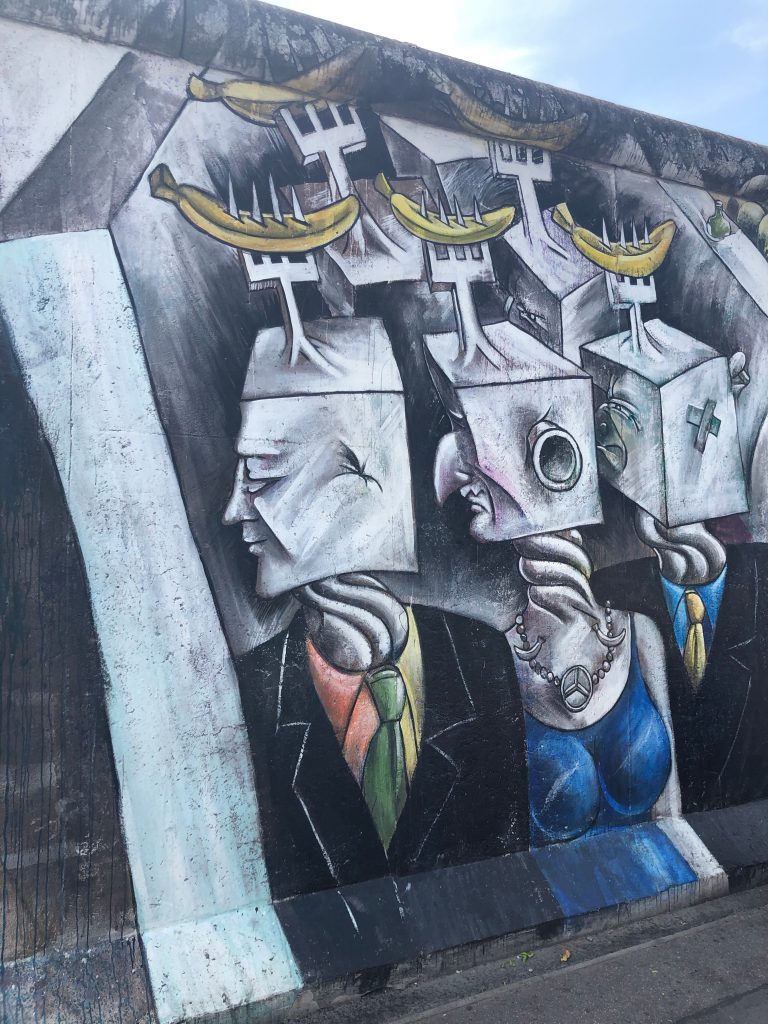
After lunch, we toured the DDR museum, which is a hands-on museum focusing on what life was like in Socialist East Germany following the Soviet occupation in 1949. They do a great job of creating an interactive and even fun environment to get a glimpse into how the German Democratic Republic operated. We had some great discussions as a family about why Germany was divided following the end of WWII into Soviet, American, French, and British sections, why three of those sections became West Germany, and what the motivation was behind the Wall being built.
Below: (L) listening to German music from the mid-20th century and (R) practicing in a driving simulator of a Trabani, both at the DDR Museum


Below: “trying on” clothes from a Cold War-era wardrobe at the DDR Museum


Our next stop was to visit Checkpoint Charlie, which was one of the main Cold War crossing points to get between East Berlin and West Berlin. There was a large exhibit detailing key events that we took time to read as we approached the reconstructed guardhouse and a sign that read “YOU ARE ENTERING THE AMERICAN SECTOR”. I found one quote particularly interesting to read, which was from US president John F. Kennedy writing to the Mayor of Berlin after the last opening in the Wall was closed. He was reiterating to the mayor that the US would not forcibly interfere with the Soviet sphere of interest while also issuing a harsh rebuke: “Since it represents a resounding confession of failure and of political weakness, this brutal border closing evidently represents a basic Soviet decision which only war could reverse. Neither you nor we, nor any of our Allies, have ever supposed that we should go to war on this point.” Getting to see the Wall, the DDR Museum, and Checkpoint Charlie all in one day was a great way to help all the information tie together.
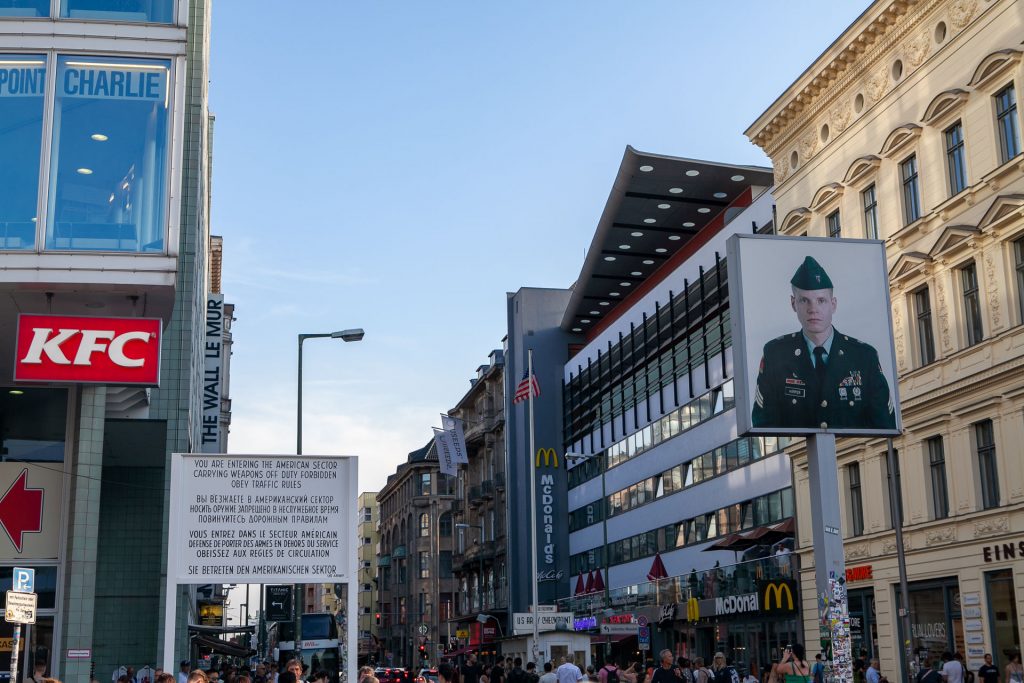

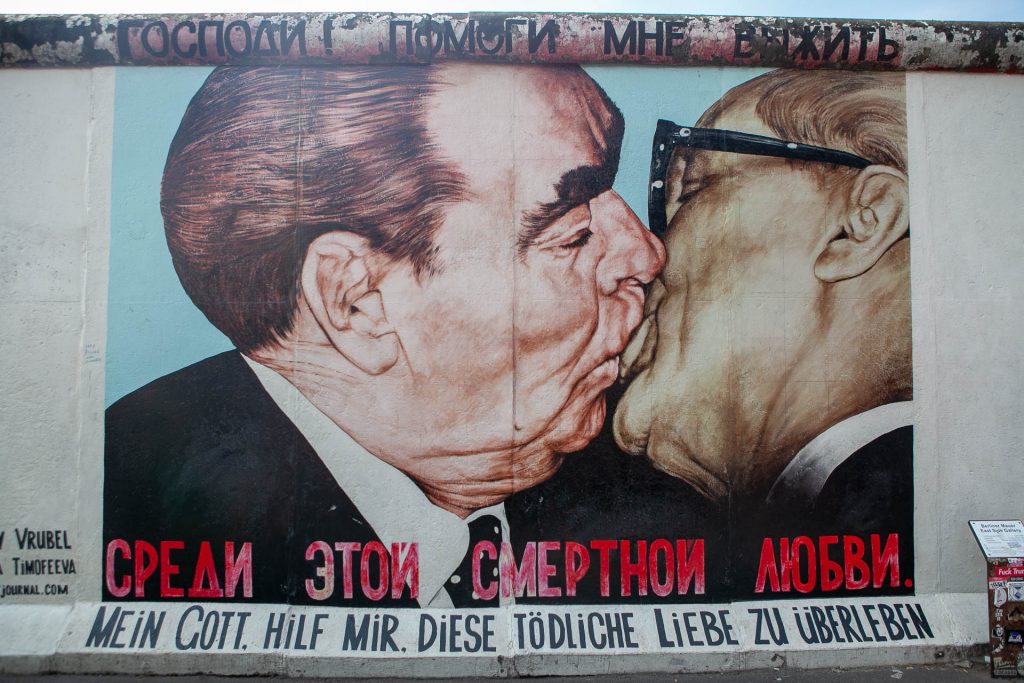
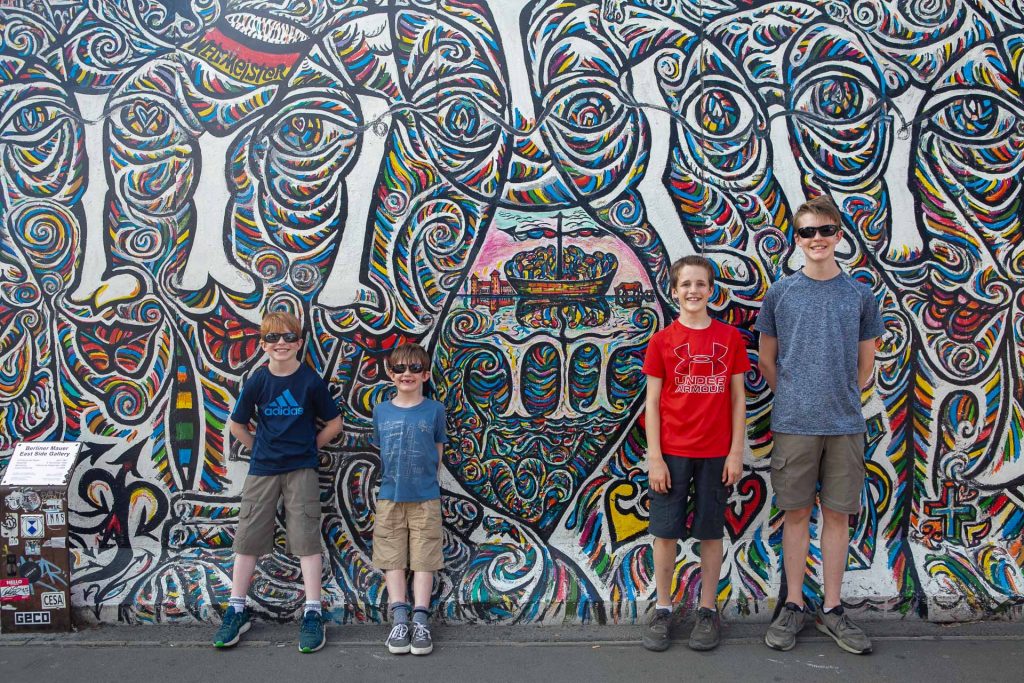
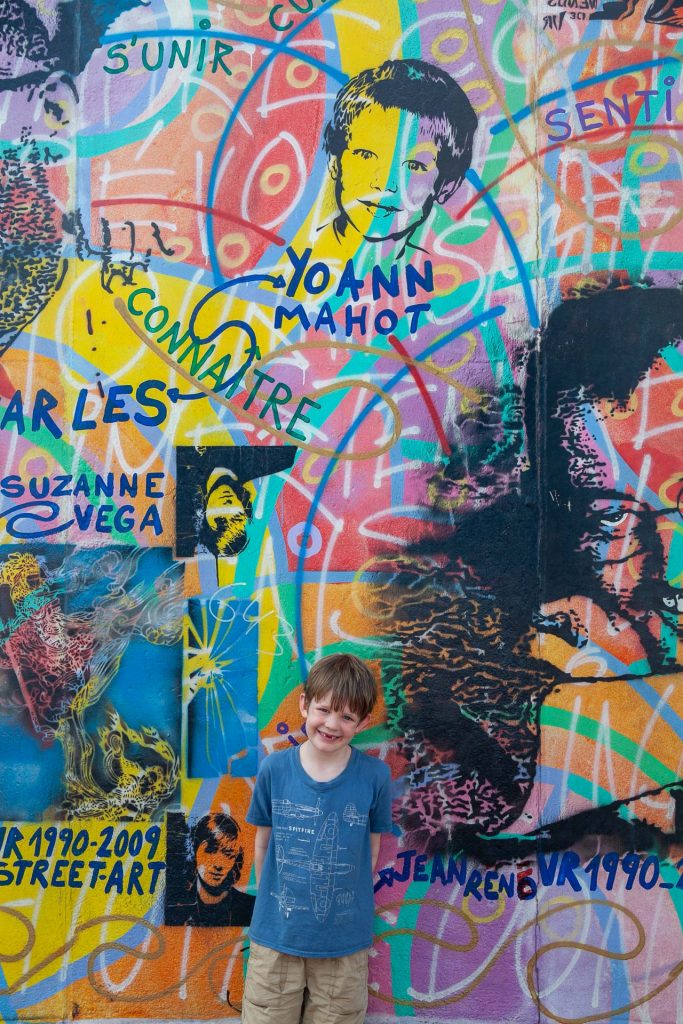
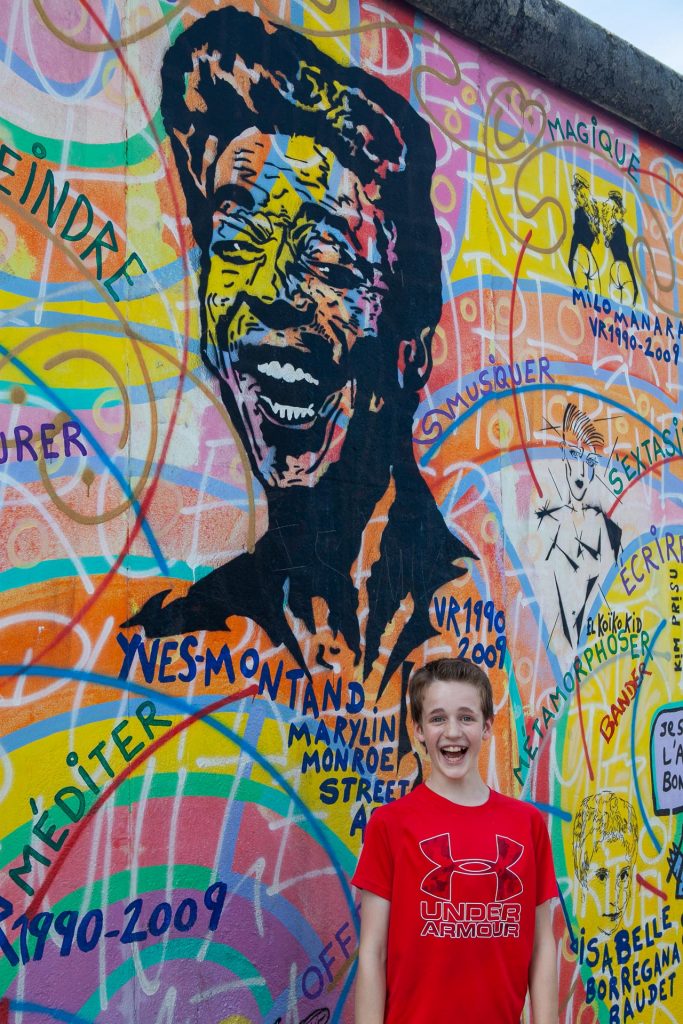
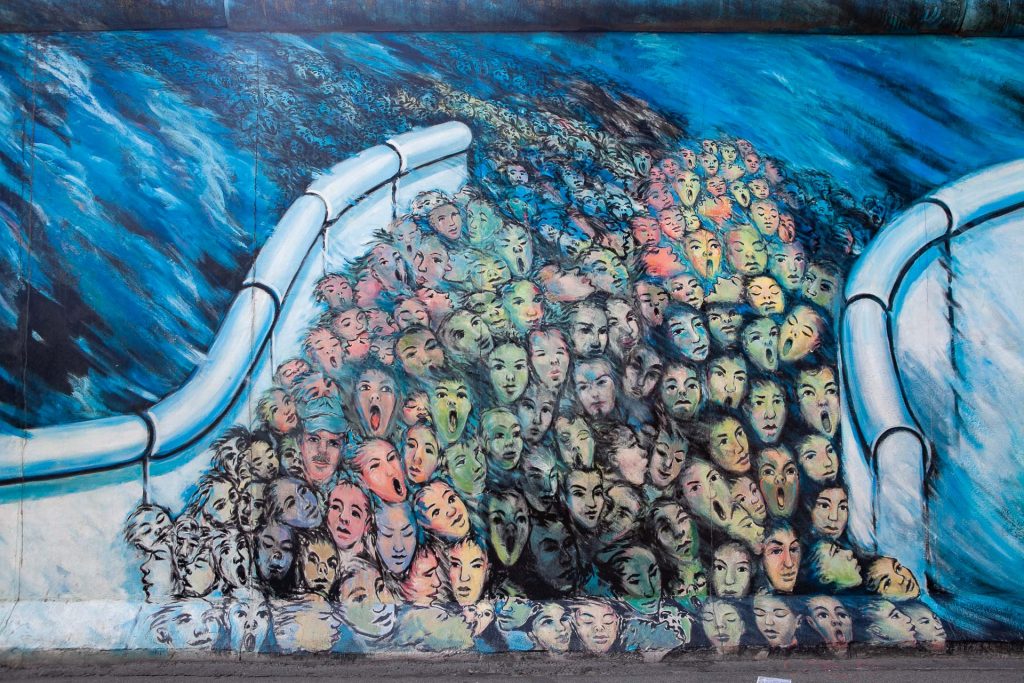
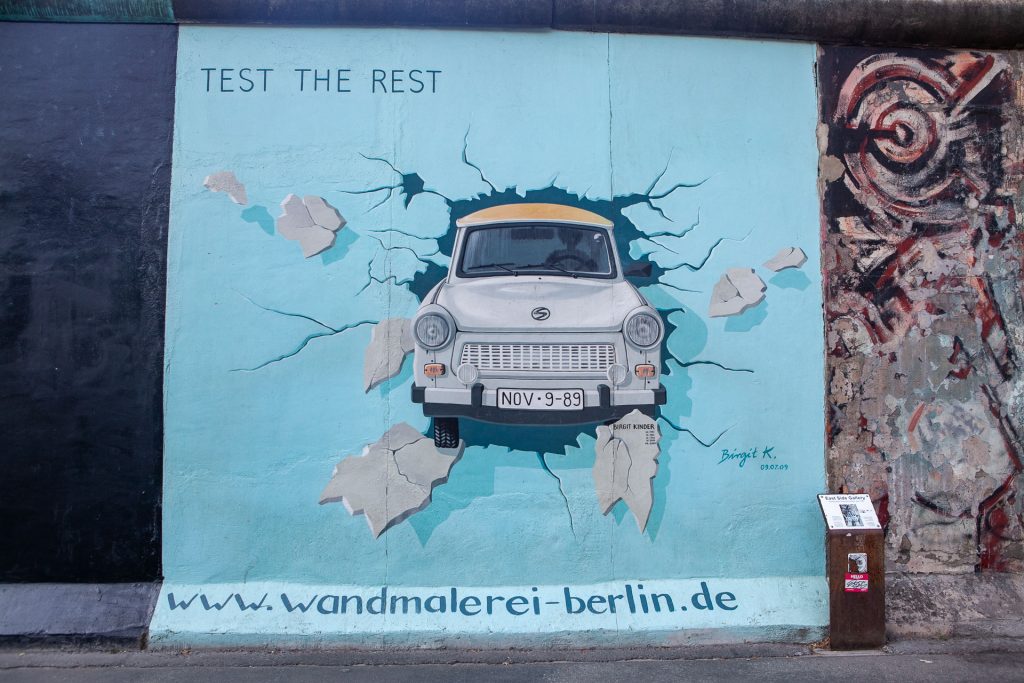



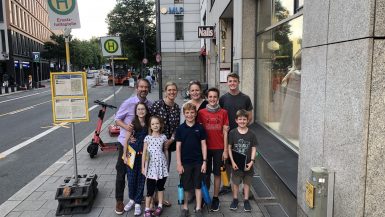
Thank you so much for giving details about your trip to Berlin. The DDR museum sounds like a great experience for the children to get a real sense of what the history is like back them. Are the signs or contents displayed in the museum all written in Deutch or both German and English? It’s intriguing to see that KFC, McDonald and the American flags surround the Checkpoint Charlie sign.
Yes, all the information was in both German and English thankfully. We studied some German while there, but my knowledge was mostly limited to saying “That is bread.”
That is so hilarious! Adding these two words will help you get around more easily, like “Guten Tag” (Good Day) and Danke schoen (Thank you very much)! 🙂
Wow, what an experience! This looks like a fantastic part of your trip. Lots of history here. Love all the pictures and seeing all your smiles. Looks like Keegan has lost a couple teeth. Such a cutie!!!! You all are though. Miss you and love you. We hope you Continue with your safe travels and all your exciting adventures.
Thanks Jody! Yes, Keegan lost a tooth in Milan and another in Venice. We were pretty relieved they came out as eating was getting a bit difficult. I hope Conner and Jaden are off to a great start with school!